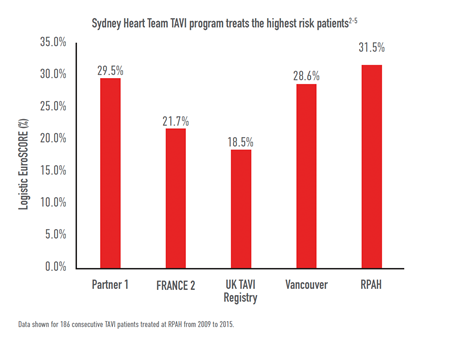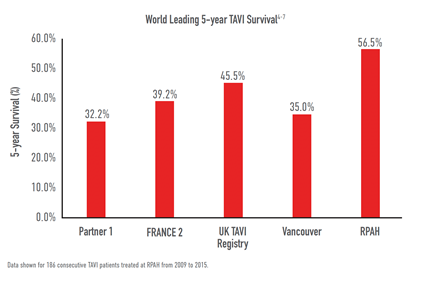The five-year survival data of our single-institution program represents the largest long-term study of survival following TAVI in Australasia to date.
ACCESS THE ARTICLE
STUDY DESIGN
All patients undergoing TAVI at a single tertiary institution between September 2009 and December 2015 were included. The primary outcome was survival, by linkage of patients with the National Death Index of the Australian Institute of Health and Welfare. Post-procedure data and echocardiographic measurements were retrospectively analysed for all patients.

All patients undergoing TAVI at a single tertiary institution between September 2009 and December 2015 were included (n=186). The primary outcome was survival, by linkage of patients with the National Death Index of the Australian Institute of Health and Welfare. Post-procedure data and echocardiographic measurements were retrospectively analysed for all patients. Multiple valve types were used: Edwards SAPIEN (16.1%), Edwards SAPIEN XT (74.2%), and Medtronic CoreValve (9.7%).
SYDNEY HEART TEAM DELIVER WORLD-LEADING 5-YEAR SURVIVAL OUTCOMES
5-year survival data is critical in understanding the long-term impact of TAVI, and it also serves as a measure of the performance of the Australian program within a global context. This data represents our first 186 patients treated from 2009 to 2015, who were also among the first patients to be treated in Australia, prior to funding, and with earlier devices which have been superseded. Despite these caveats, the outcomes are significantly better than international benchmarks.
